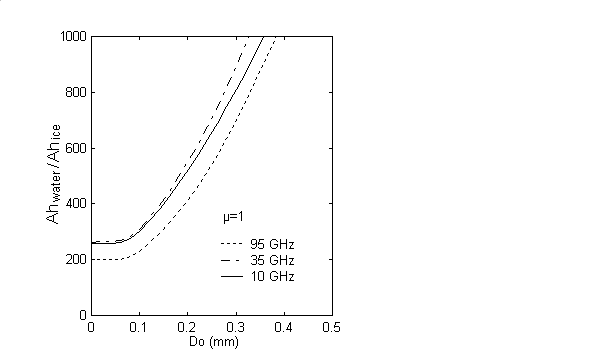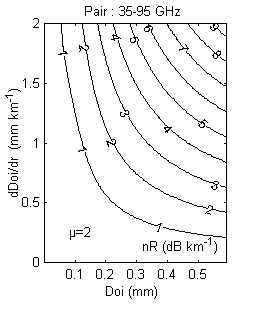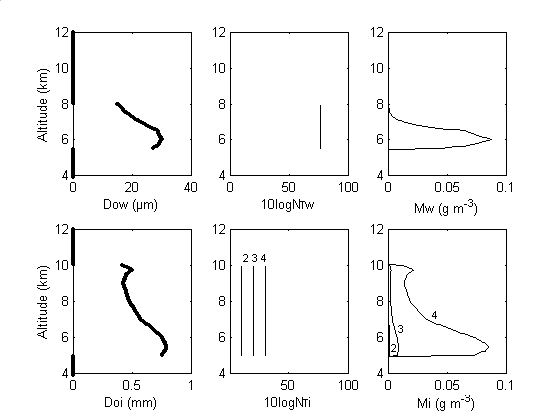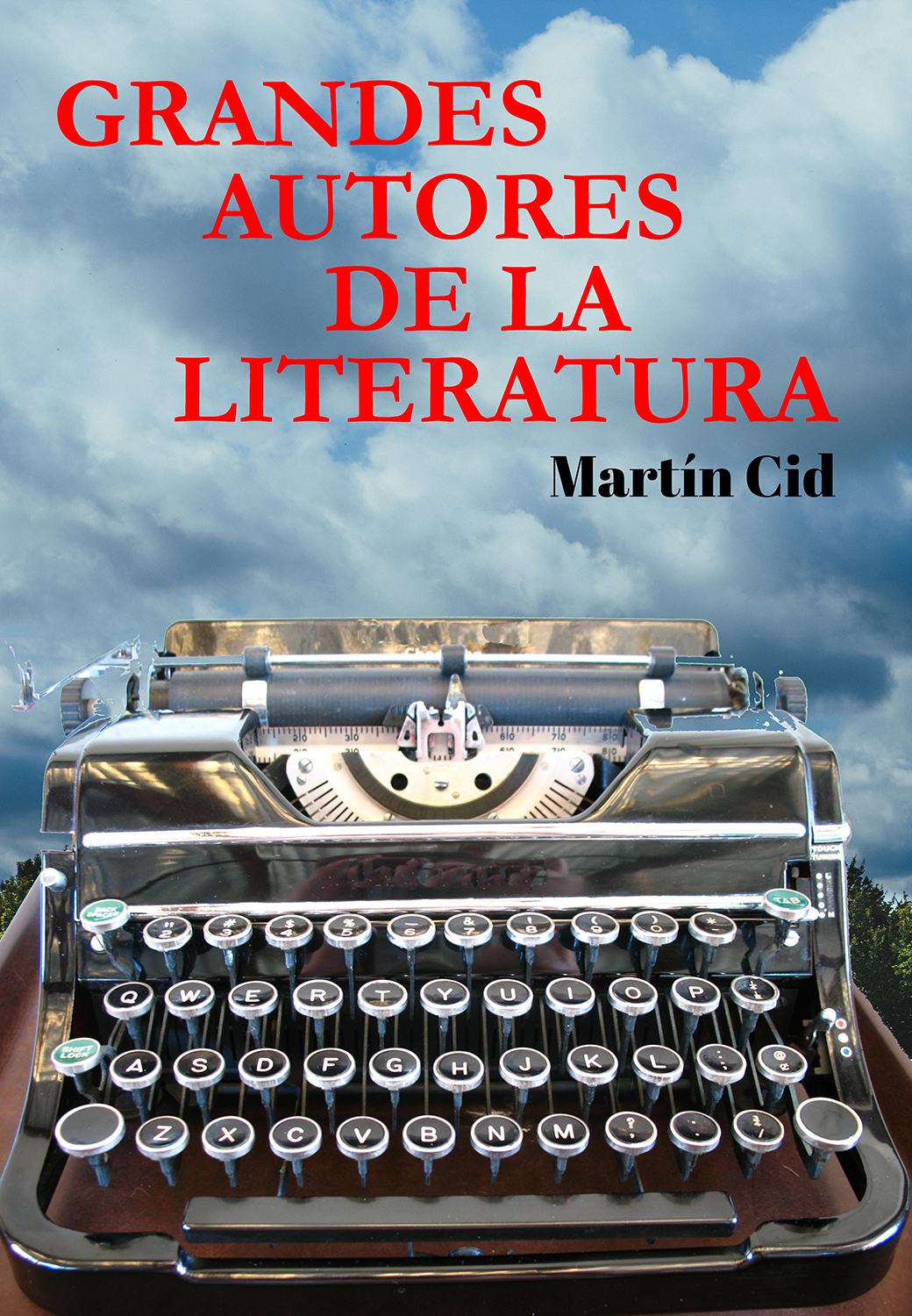NONRAYLEIGH SCATTERING EFFECTS IN MIXED PHASE CLOUD OBSERVATIONS NICOLAS
NONRAYLEIGH SCATTERING EFFECTS IN MIXED PHASE CLOUD OBSERVATIONS NICOLAS
Non-Rayleigh scattering effect in mixed phase clouds observations
Non-Rayleigh scattering effects in mixed phase cloud observations
Nicolas Gaussiat*and Henri Sauvageot
Laboratoire d'Aérologie, Observatoire Midi-Pyrénées, Toulouse, France
*email: [email protected]
INTRODUCTION
In most parts of the troposphere, temperature is negative. That is why, for a large fraction, the tropospheric clouds are mixed clouds. To correctly describe the radiation transferts in mixed clouds, the knowledge of both ice and liquid water profiles is required.
In mixed clouds, radar reflectivity is dominated by ice while liquid water is responsible for attenuation. Gosset and Sauvageot (1992) have proposed a dual-wavelength radar method for the remote sensing of the cloud profiles. In this algorithm, liquid water cloud Mw is deduced from the differential attenuation between the two wavelength and ice water content Mi is computed from the radar reflectivity. This method assumes that the size of the hydrometeors satisfies the Rayleigh approximation for both scattering and attenuation, because, in the presence of non-Rayleigh effects, an ambiguity appears on Mw and Mi.
The object of this paper is to discuss the effect of non-Rayleigh scattering on the performances of the dual-wavelength radar algorithm.
THEORY
Let Zm be the radar reflectivity measured for the wavelength , that is :
![]()
where Ze is the unattenuated radar reflectivity factor, A is the attenuation factor and r the radar target distance. A, in dB km-1, is the sum of Ag and Ah, the two-way attenuation factors for gas and hydrometeors respectively.
Ag is computed from the standard profile of temperature.


Fig.1 : Variation of the attenuation by ice and water clouds and ratio Ahw/Ahi as a function of Do, for the frequency 95, 35 and 10 GHz.
Ah is computed by the summation of the Mie attenuation cross-section Qe (D), where D is the equivalent spherical diameter, over the hydrometeors size distribution N(D).
The strong difference between ice and water cloud attenuation appears on figure 1, where Ah and Ahw/Ahi, as a function of Do, the mean volume diameter, are presented.
In the Rayleigh approximation conditions the attenuation factor for liquid water cloud droplets, and for frequency , is:
![]()
where Mw is in g m-3 and C is the water cloud attenuation coefficient in dB km-1 g-1 m3 for one way.
Thus, for two frequencies having significantly different attenuation properties we can write:
![]()
where and stand for the lower and higher frequency respectively and Ad is the differential attenuation.
The Dual wavelength ratio (DWR) is defined (Eccles and Muller, 1971) by:
![]()
where Zm is in mm6m-3. Using (1-1) in (1-4) gives
![]()
Taking the range derivative of (1-5), we found:
![]()
Then, with (1-3), the liquid water content for Rayleigh conditions is obtained:
![]() .
.
It is assumed that N(D) can be represented by a modified gamma distribution :
![]()
where No, µ, Do are the parameters and NT =∫N(D)dD is the total number of hydrometeors by cubic meter.
For Mie scattering, Ze has to be rewritten (Lhermitte 1988, Sekelsky et al. 1996) :
![]()
(1-9),
where Ze is in mm6m-3, is the wavelength,Kw()2 is the dielectric factor for , is the hydrometeor density and b(D) is the back-scattering efficiency as a function of D.
Using (1-9) in (1-5) gives :
 (1-10),
(1-10),
with in cm and =(D).
Taking the derivative and inverting (1-10), we obtain :
![]() ,
,
with
![]()
(1-12).
Using (1-12), Ec(Do,) was computed for water and ice, with as a parameter, for the pair 35-95 GHz and 10-35 GHz. The results are presented on Fig 2.

Fig 2 : Variation of Ec(Do,µ) as a function of Do with µ as a parameter for ice hydrometeor distribution and for the 35-95 GHz and 10-35 GHz pairs.
In non-Rayleigh conditions (1-7) becomes :
![]() ,
,
with
![]() ,
,
where nR(Do,) is in dB km-1 .


Fig 3 : Variation of nR(Do,µ) and dDoi/dr as function of Do for an ice hydrometeor distribution with µ as a parameter for the 35-95 GHz and the 10-35 GHz pairs.
Of course, neglecting the non-Rayleigh effects can lead to an error in the estimation of the liquid water content Mw.
MIXED-CLOUD MICROPHYSICS.
In situ observation shows that mixed-clouds are typically made up of 1) a supercooled water cloud with No very large and Do not larger than about 30 m and 2) a bimodal distribution of ice particles with a large number of crystals smaller than about 50 µm and a small number of particles with size between 100 and 400 µm (Heymsfield et al. 1991; Sassen 1991; Mitchel and al. 1996). The large ice particles, because their low terminal fall velocities, create slanted streamers with high reflectivity. Thus mixed-clouds can schematically be described as the addition of an attenuating, Rayleigh scattering water cloud and a non attenuating, non-Rayleigh scattering bimodal ice cloud.
In the present work dedicated to the study of the radar propagation, for sake of simplicity, we choose to ignore the small mode of the ice particle distribution.
SIMULATION
Let Nw(D,z) and Ni(D,z) (eq. 1-9) be the water and ice cloud particle size distributions respectively.
For all simulated cases, we used NTw=4×107m-3, µw=1 and Dow(z) varying from the bottom to the cloud top following the polynomial curve presented in Fig 4.

Fig 4 : Vertical profiles of Nw(D) and Ni(D) parameters and corresponding liquid water and ice water content.
For Ni (D, z), the parameter Doi (z) has the same profile for the four simulated cases : a polynomial variation between the bottom and the top of the cloud (Fig. 4). NTi takes the values 0, 101 ,102 and 103 for the four cases respectively, µi is constant and equal to 2

Fig 5 : Upper Row, reflectivities at 10, 35 and 95 GHz fo a mixed cloud. NTi is the number of large ice particles.
Lower Row, liquid water content simulated and retrieved from the wavelength pairs 10-35 GHz and 35-95 GHz.
RESULTS
In the absence large ice particles (NTi=0), the dual wavelength method gives correct results for both wavelengh pair (See Fig 5, the first column of the simulation).
As the number of large ice particles increases, incorrect values of liquid water content appear. The errors are related to the Doi gradients.
These errors are larger for the 35-95 pair than for the 10-35 one, but in both cases, retrieved liquid water profiles are jeopardized.
CONCLUSION
Simulations showed in the present work suggest that the dual wavelength radar method for liquid water content retrieval in the mixed cloud is very sensitive to the non-Rayleigh effect induced by large ice particles.
REFERENCES
Eccles , P. J. and E. A. Mueller, 1971 : X-Band attenuation and liquid water content estimationby dual-wavelengh radar. J. Appl. Meteor 10, 1252-1259.
Gosset, M. and H. Sauvageot, 1992 : A Dual-Wavelengh Radar Method for Ice-Water Characterisation in Mixed-Phase Clouds. J.Atmos.Oceanic.Technol., 14., 256-272
Heymsfield, A. J., L. M. Miloshevich, A. Slingo, K Sassen and D. O'C Starr, 19991/ An observational and theoretical study of hightly supercooled altocummulus. J. Atmos. Sci., 48, 923-945.
Lhermitte, R. M., 1988 : Cloud and precipitation remote sensing at 94 GHz Trans. Geosci. Remote Sens 26, 207-216.
Mitchell, D.L., S.K. Chai, Y.Liu, A.J.Heymsfield and Y. Dong, 1996 : Modeling cirrus clouds. Part I : Treatment of bimodal size spectra and case study analysis. J. Atmos. Sci., 53, 2956-2966.
Sassen, K., 1991 : Aircraft-produced ice particles in a hightly supercooled altocummulus cloud. J. Applied Met., 30, 765-775.
Tags: cloud observations, : cloud, nonrayleigh, phase, effects, scattering, nicolas, cloud, observations, mixed
- CERTIFICADO VETERINARIO PARA LOS DESPLAZAMIENTOS DE PERROS GATOS Y
- G ENERALITAT DE CATALUNYA DEPARTAMENT D’INTERIOR DIRECCIÓ GENERAL D’ADMINISTRACIÓ
- PMS COMPLIANCE TEST SCRIPT (PRIMHD) MOH DATA MANAGEMENT 201920
- A J P E S AGENCIJA REPUBLIKE SLOVENIJE
- 2 LEKTORS (UZ DARBA LĪGUMA PAMATA POLICIJAS TIESĪBU KATEDRĀ)
- REGULAMIN POWIATOWEGO KONKURSU PLASTYCZNEGO PT „TWÓRCZYSTWÓR – WYRAŹ SWOJE
- PAPER TITLE IN CAPITAL FONT SIZE 14 SINGLE SPACE
- RIDER TO MULTIFAMILY LOAN AND SECURITY AGREEMENT CONDOMINIUM PARTIALLY
- CELLS GROWN IN AXENIC MEDIUM HAVE SLOWER GROWTH RATES
- AYUDAS PARA CONTRATOS PREDOCTORALES DE LA UNIVERSIDAD DE SALAMANCA
- A JOHN DRUGAN ELEMENTARY 1ST 9 WEEKS GRADE
- SOLICITUD DE PATROCINIO CIENTÍFICO DE ACTIVIDADES DOCENTES DE FORMACIÓN
- LUCIANO PAVAROTTI NESSUN DORMA CONTENUTI LESSICO E SINONIMI
- KARAR NO 201024 GENEL MÜDÜRLÜK MAKAMINA İSTEM KUVEYT TÜRK
- BENEDIKT XVI NAKON SMRTI NAŠEGA DRAGOG PAPE IVANA PAVLA
- REGERINGSKANSLIET FINANSDEPARTEMENTET 103 33 STOCKHOLM LÅNGTIDSUTREDNINGEN 200304 (SOU 200419)
- MINISTERIO DE SALUD PÚBLICA PÁG 15 DE 16 COORDINACION
- MARIJAMPOLĖS CHORAS THE PRAYER (CHORŲ KARAI) MALDA
- SEMINAR ON THE ROLE OF WOMEN IN THE FORESTRY
- BOOK REVIEW DEVELOPING ORAL SKILL ELLEN MEASDAY EMEASDAYCOMCASTNET MADDEN
- INFORME Nº DFOEGU 82005 30 DE JUNIO 2005 DIVISIÓN
- DEVELOPMENT ADMINISTRATION PROFESSOR PAUL HABER REDBEARDMTYAHOOCOM UNIVERSITY OF MONTANA
- FICHA DE CONTROLE DE MORCEGOS HEMATÓFAGOS 1 –
- REGULAMIN W SPRAWIE ZASAD I TRYBU NADAWANIA ORAZ NOSZENIA
- 2549 BAY OF BISCAYIBERIAN TASK TEAM MEETING ON 1314
- 39 UNIVERSIDAD AUSTRAL DE CHILE FACULTAD DE CIENCIAS ESCUELA
- MÖTESPROTOKOLL DRESSYRMÖTE NR 1 20110224 NÄRVARANDE SANDRA LARSSON ANNIE
- 68 APPENDIX A CMOS DEVICE MODELING FOR CIRCUIT DESIGN
- BOLETÍN TÉCNICO N° 76 INVERSIONES EN CIERTOS TÍTULOS DE
- KONSTANZ 30TH APRIL 2007 —DIFFUSE ANXIETIES DEPRIVED ENTREPRENEURS— COMMISSION
OBRAZAC BROJ 2 ZAHTJEV ZA PRISTUP INFORMACIJAMA PODNOSITELJ ZAHTJEVA
 TECNOLOGÍA SIDEROMETALÚRGICA 3º (EM)ENERO2015 TIEMPO TOTAL DE EXAMEN UNA
TECNOLOGÍA SIDEROMETALÚRGICA 3º (EM)ENERO2015 TIEMPO TOTAL DE EXAMEN UNASL63 PAGE 0 WORLD TRADE ORGANIZATION SL63 15 DECEMBER
ARCGIS SERVER AND 1GECONNECTOREXOWS PRELIMINARY TEST RESULTS THE
VOLBY DO EVROPSKÉHO PARLAMENTU 23 A 24 KVĚTNA 2014
 SMLUVNÍ STRANY SPRÁVA KRKONOŠSKÉHO NÁRODNÍHO PARKU DOBROVSKÉHO 3 543
SMLUVNÍ STRANY SPRÁVA KRKONOŠSKÉHO NÁRODNÍHO PARKU DOBROVSKÉHO 3 5430 НА БЛАНКЕ ОРГАНИЗАЦИИ СПРАВКА СООБЩАЕТ ЧТО НАИМЕНОВАНИЕ
LAMPIRAN 13 KESEDIAN MITRA KOLABORATOR LUAR NEGERI LETTER OF
 GRANDES AUTORES DE LA LITERATURA MARTÍN CID
GRANDES AUTORES DE LA LITERATURA MARTÍN CID 3 PATVIRTINTA JONAVOS RAJONO SAVIVALDYBĖS VIETOS VEIKLOS GRUPĖS VALDYBOS
3 PATVIRTINTA JONAVOS RAJONO SAVIVALDYBĖS VIETOS VEIKLOS GRUPĖS VALDYBOSKluczowe Zapisy i Duszpasterskie Konsekwencje (oświadczenie o Uczęszczaniu na
 VERSENYENGEDÉLY IGÉNYLŐ ADATLAP NYOMTATOTT BETŰKKEL KÉRJÜK KITÖLTENI! MINDEN ROVAT
VERSENYENGEDÉLY IGÉNYLŐ ADATLAP NYOMTATOTT BETŰKKEL KÉRJÜK KITÖLTENI! MINDEN ROVAT LA VIOLENCIA DE GÉNERO EN LAS NIÑAS Y MUJERES
LA VIOLENCIA DE GÉNERO EN LAS NIÑAS Y MUJERES1000 TL’LIK DAMGA PULU KİRA SÖZLEŞMESİ DAİRESİ MAHALLESİ SOKAĞI
RA’AD ZIAD TAWALBEH IRBID JORDAN T +962 79
SELECTED PUBLICATIONS (EXCLUDING PROJECTCONSULTANCY REPORTS) PUBLICATIONS THESIS THESIS TITLED
 TEATRO & DANZA 2013 SETEMBRODECEMBRO MORNINGS GUATEQUE GLOBAL BLANCA
TEATRO & DANZA 2013 SETEMBRODECEMBRO MORNINGS GUATEQUE GLOBAL BLANCAOFFICE OF HIGH COMMISSIONER ON HUMAN RIGHTS SUBCOMMISSION ON
ZAŁĄCZNIK NR 2 TABELE PARAMETRÓW TECHNICZNYCH PAKIET
DISPENSA SUL CALCIO ACCENNI STORICI IL GIOCO DEL CALCIO